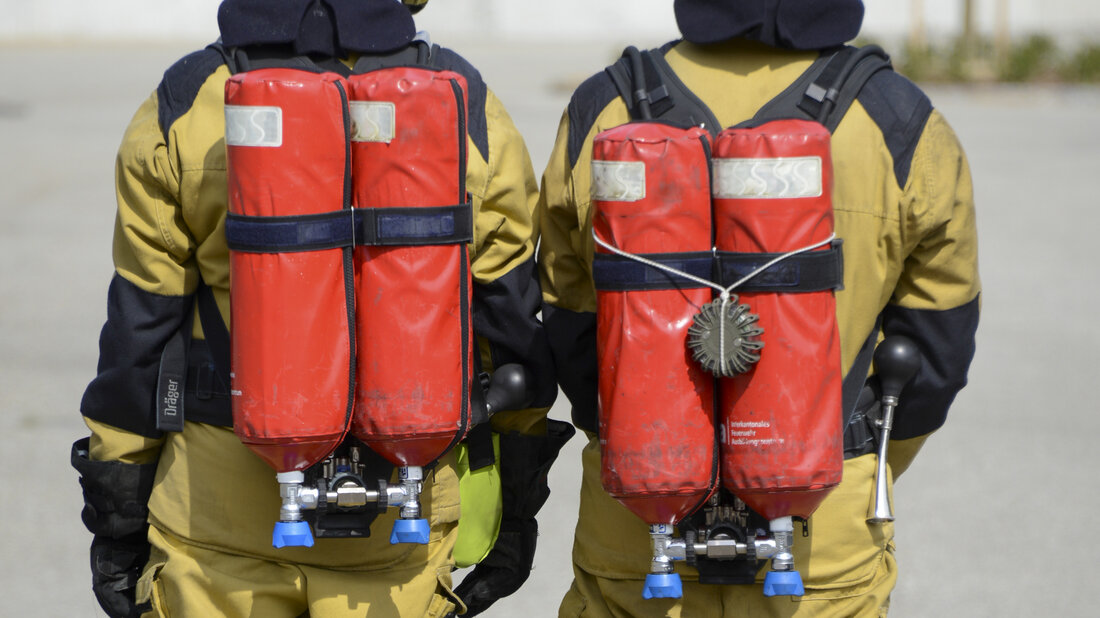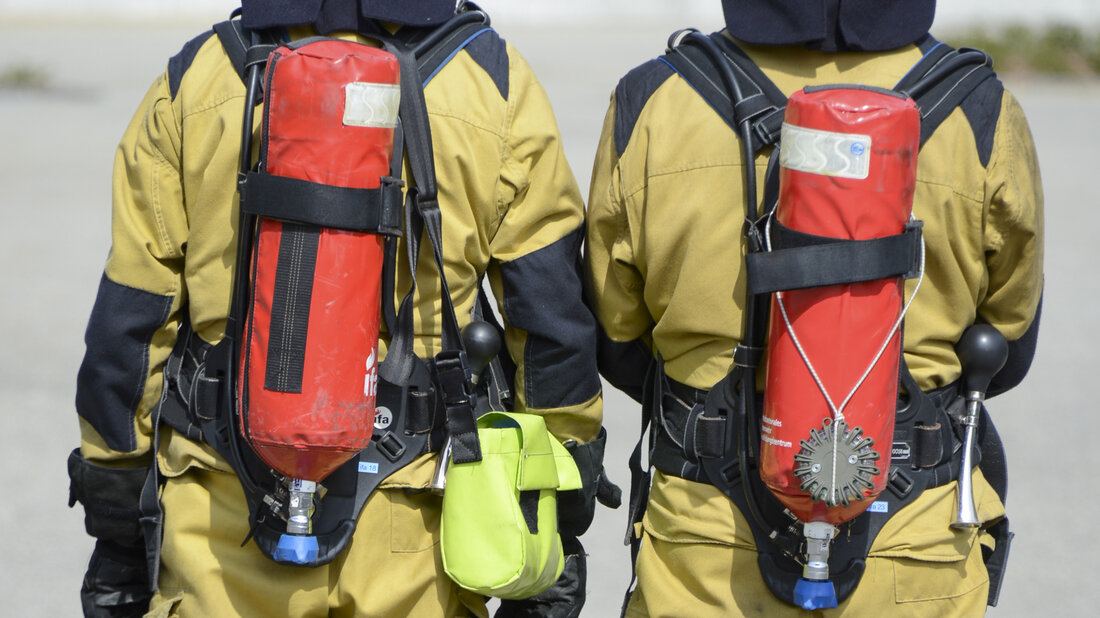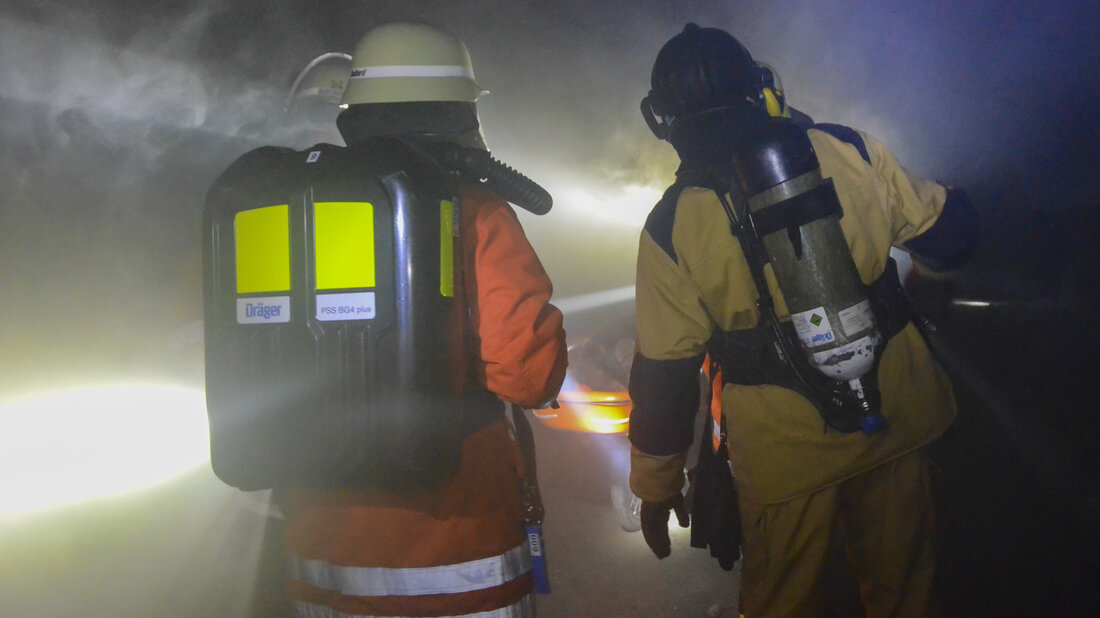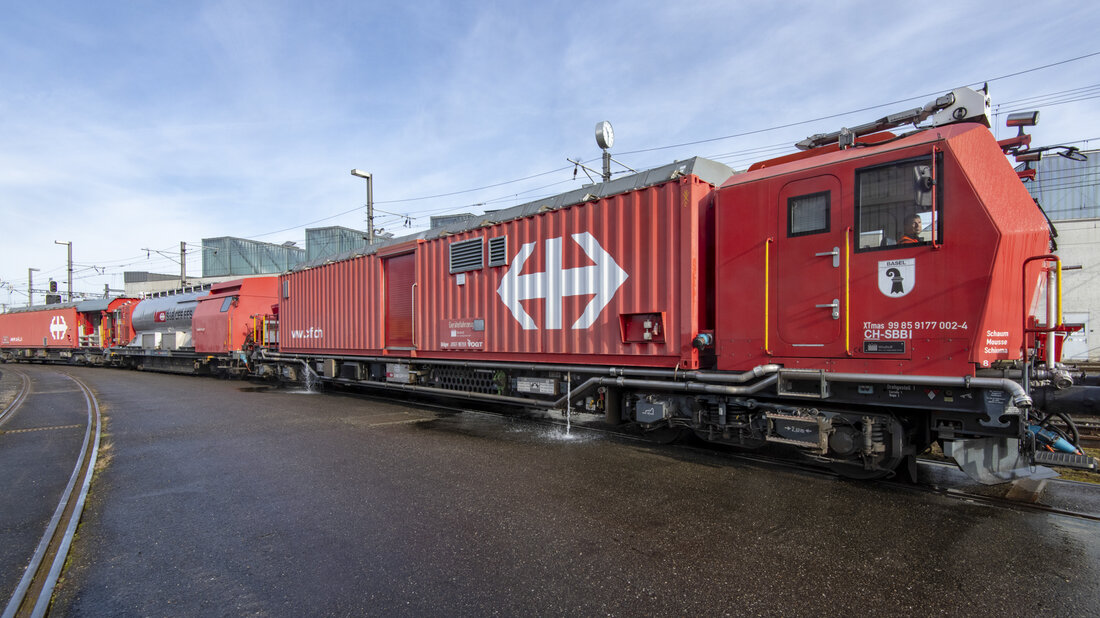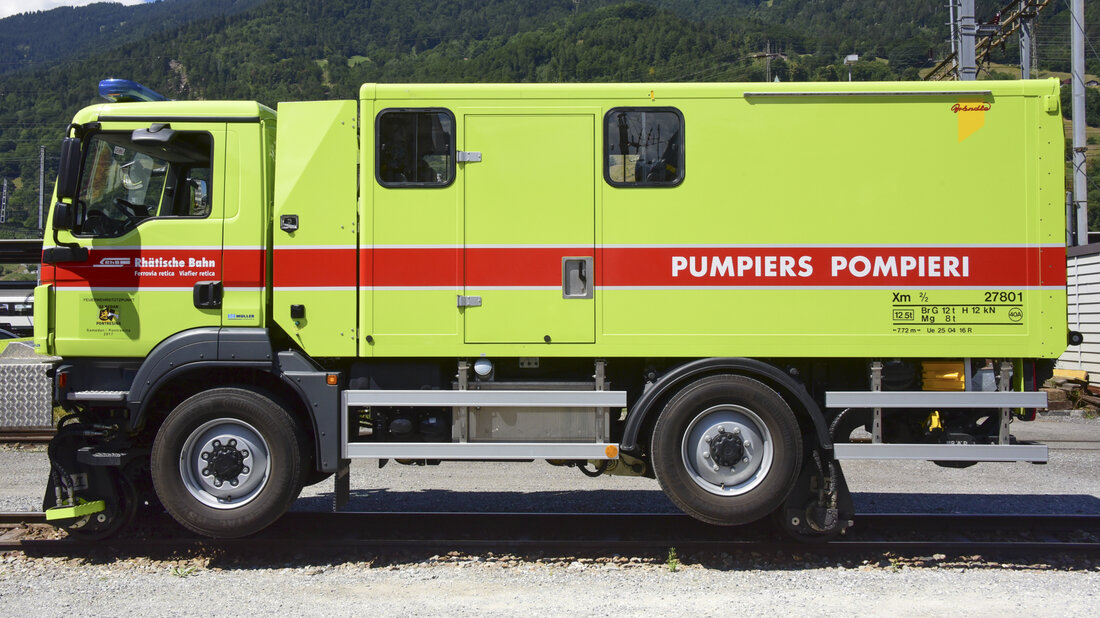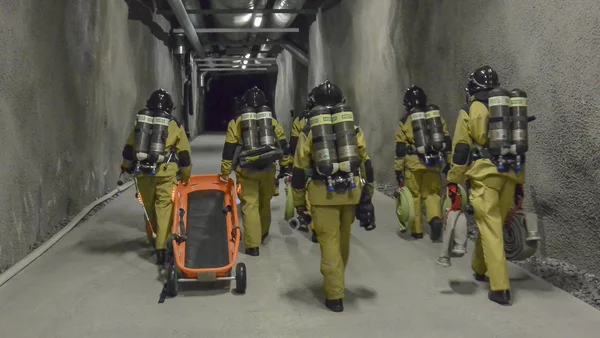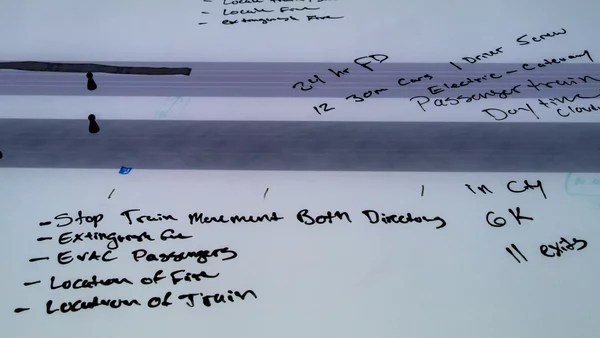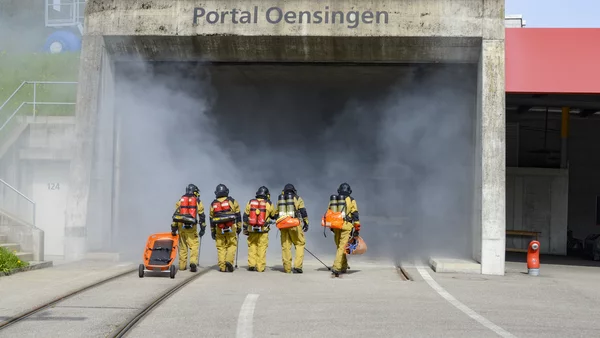Double-cylinder SCBAs are indispensable
After training more than 10 000 firefighters, we know: Physically average firefighters wearing SCBAs can handle penetration depths of up to 500 m. For this, however, they absolutely need a double-cylinder breathing apparatus. One-bottle apparatuses are only sufficient for about half of the distance.
Double-cylinder breathing apparatus present many «tunnel fire services» with some challenges. Not only do they usually have to be purchased additionally. In order to store them in the crew cabin of the fire engines, extensive reconstruction work is also required. Nevertheless, we recommend using double-cylinder apparatus for all applications in UTS, because they not only allow longer operating times but can also give the emergency personnel more safety.
Rebreathers need special training
Circulatory or regeneration devices allow slightly longer operating times compared to compressed air breathers. Because they regenerate the exhaled air in a chemical process. However, the air is heated strongly. From the constant feedback from fire services, we know that these devices can be helpful despite the additional heat load. But only if the firefighters often practice with them. However, this is often omitted of cost-saving reasons. Every single use of circulatory or regeneration apparatus is more time-consuming and expensive than that of compressed air breathers. This makes it more logical to use compressed air breathers. The firefighters are very familiar with these, and they can be practised intensively without great expense.
Special vehicles for special situations
As a rule, all operational tasks in road tunnels can be handled with standard firefighting vehicles. In some cases, however, a technical upgrade is useful, for example, when only little emergency personnel are immediately available for initial deployment. In this case, special vehicles such as those maintained by the Schadenwehr Gotthard can compensate for the shortage of personnel to a certain extent. One example are fire trucks with a fire monitor on the roof.
Most railway tunnels are not accessible by road fire trucks. In order to be able to enter the tunnel quickly with a crew, equipment and extinguishing agents, either fire and rescue trains (FRT) or road-rail vehicles are used.
The driver's cabs and the rescue car of the FRT are supplied with positive pressure and thus provide a secure space that is protected against the smoke from the fire. For this reason, FRT can also handle penetration depths greater than 500 m. Road-rail vehicles are road vehicles with a rail wheelset that allows them to ride on rails. Its main benefit is to quickly reach portals that are not accessible by road vehicles or are very difficult to reach. However, the vehicles currently available do not have a secured space with positive pressure, so smoke can enter the cabin. Therefore, with road-rail vehicles in the smoke, no higher penetration depths than about 500 m can be achieved.



